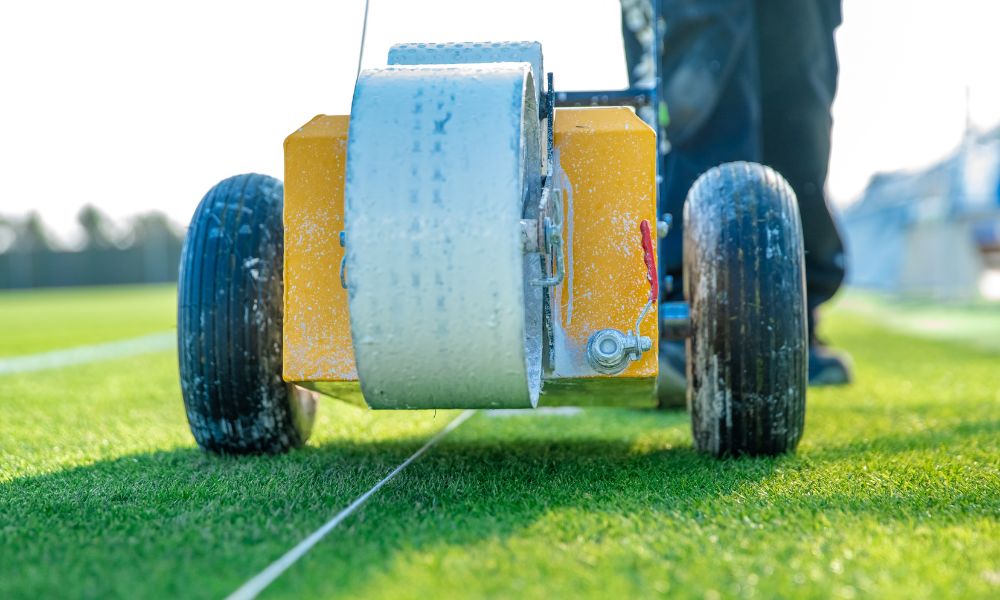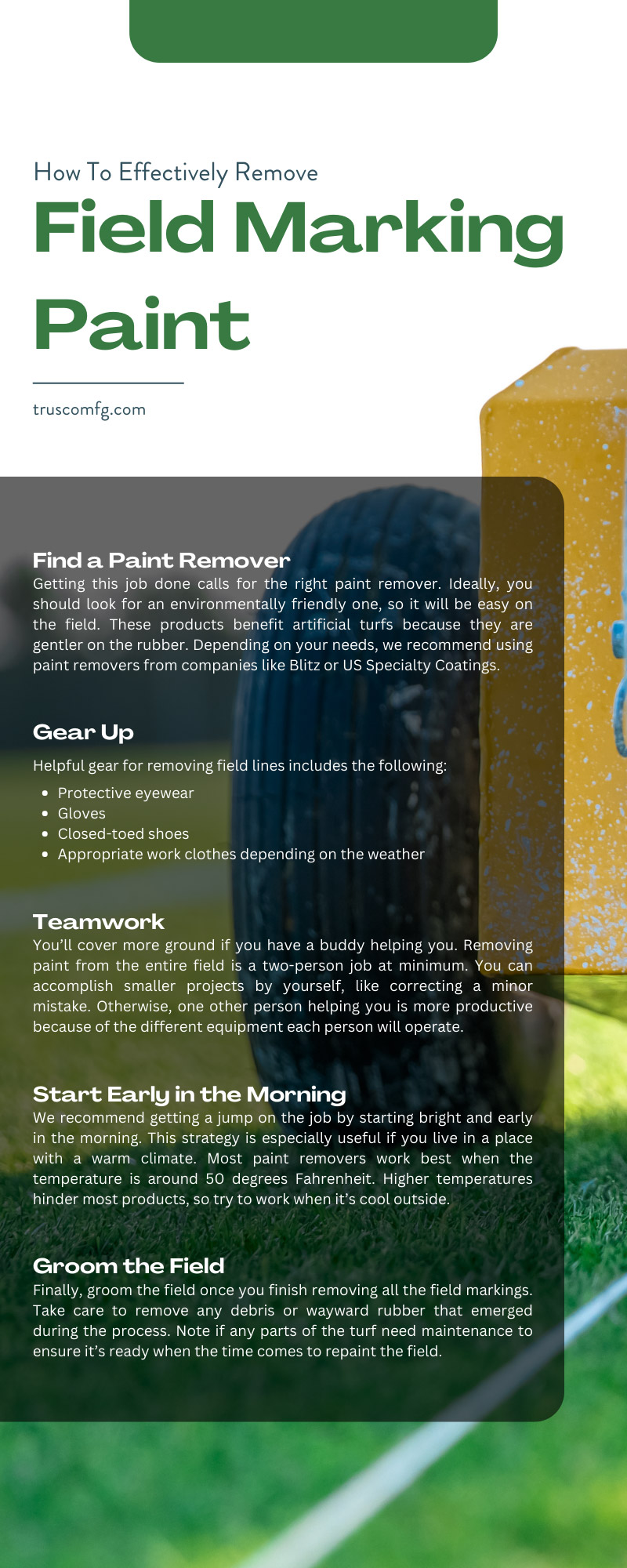
Plenty of work goes into caring for a field, whether yours is at an elementary school or a university. After all, this is where people gather for important sporting events year-round. Field marking lines are a vital part of the game, from football to lacrosse tournaments. Teams need field markings to perform, and referees need them to enforce rules and ensure all athletes play correctly.
Quality field marking machines get the job done, but there are occasions when you need to know how to remove field marking paint effectively. Removing it every so often allows for better maintenance, making the area safer for everyone. Alternatively, if someone makes a mistake while lining the field, they can correct it with the proper methods. Paint removal is necessary in the unfortunate event of vandalism.
No matter why you need to remove field marking paint, we’re here to help you tackle the task to ensure you’re ready for game day.
Find a Paint Remover
Getting this job done calls for the right paint remover. Ideally, you should look for an environmentally friendly one, so it will be easy on the field. These products benefit artificial turfs because they are gentler on the rubber. Depending on your needs, we recommend using paint removers from companies like Blitz or US Specialty Coatings.
Mowing your lawn will do wonders if your field is all-natural. Pay close attention to what’s in certain paint removers, as some chemicals can damage and discolor the grass. Once you finish mowing, a power washer or hose can help wash away the paint.
Gear Up
After finding the perfect paint remover, you need to gear up for the job.
Helpful gear for removing field lines includes the following:
- Protective eyewear
- Gloves
- Closed-toed shoes
- Appropriate work clothes depending on the weather
Wearing the correct gear helps you accomplish the task safely. You want to prevent any paint remover or leftover paint from coming into contact with your eyes or skin.
Teamwork
You’ll cover more ground if you have a buddy helping you. Removing paint from the entire field is a two-person job at minimum. You can accomplish smaller projects by yourself, like correcting a minor mistake. Otherwise, one other person helping you is more productive because of the different equipment each person will operate.
Start Early in the Morning
We recommend getting a jump on the job by starting bright and early in the morning. This strategy is especially useful if you live in a place with a warm climate. Most paint removers work best when the temperature is around 50 degrees Fahrenheit. Higher temperatures hinder most products, so try to work when it’s cool outside.
You can always test the field’s temperature with an infrared thermometer to ensure you work in ideal conditions. In addition to the paint remover performing best on cold turfs, you will feel comfortable working in cool weather.
Best Practices for Small Jobs
Small jobs are simple to accomplish with a little bit of elbow grease. We define them as removing a few lines from the field, so the following practices are ideal for a quick fix. Keep in mind that these methods work less effectively when you need to remove all the artificial turf’s markings.
Equipment
The primary equipment you need for tackling small jobs are:
- Paint remover in a spray bottle
- Water
- Bristle brush
Spray and Scrub
Begin the job by spraying paint remover on the line you want to remove. Let the product rest for a few minutes, as this will allow it to soak in and perform most efficiently.
Once the few minutes have elapsed, use your bristle brush to scrub the area. The paint will start disappearing as you agitate the artificial turf. To guarantee full removal, pour water onto the turf. You can do this by bringing along a second spray bottle filled with water or simply pouring it out from a standard water bottle.
After you wet the field with water, continue to utilize your bristle brush on each section. Tackle the areas one at a time until all the paint is gone. This is how to effectively remove field marking paint on a small-scale project.
Pro-Tip
Spray undesired sections in advance to prime them for scrubbing.
Best Practices for Big Jobs
Naturally, the scrub and spray method will only work when removing paint from a small portion of the field. It would be best to tackle big jobs with another set of helping hands, so ask one of your colleagues to help. You will both need the right equipment to work effectively.
Equipment
When working a big job, consider investing in the following products:
- Pump or backpack sprayer
- Walk-behind machine
- Power washer or hose
Spray and Stay
Start by spraying the paint remover solution onto the field. Saturate the area to ensure you apply enough product. Hold the sprayer high enough to get adequate coverage while you work—ideally, a foot or two from the ground. Spraying too closely will result in a narrow application.
Don’t wander too far from your buddy as you’re doing this. As a best practice, we recommend staying only about five yards ahead. Let the product sit for a minute or two. Then, your partner can use the walk-behind machine.
This device works similarly to your bristle brush, albeit on a large scale. The bristles on the machine agitate the area as it moves over the field markings.
Rinse and Repeat
To ensure all the paint is gone, use a power washer on a low setting to rinse the turf after your buddy finishes the area with the walk-back machine. Alternatively, you may utilize a hose for a gentler approach. Complete the process by repeating it over the artificial turf.
Groom the Field
Finally, groom the field once you finish removing all the field markings. Take care to remove any debris or wayward rubber that emerged during the process. Note if any parts of the turf need maintenance to ensure it’s ready when the time comes to repaint the field.
Trusco Manufacturing has over 55 years of experience in paint striping machines and has sold thousands of units. We make all our products proudly in the USA. Consider choosing us for all your field painting needs. Our team of professionals is ready to assist you!

